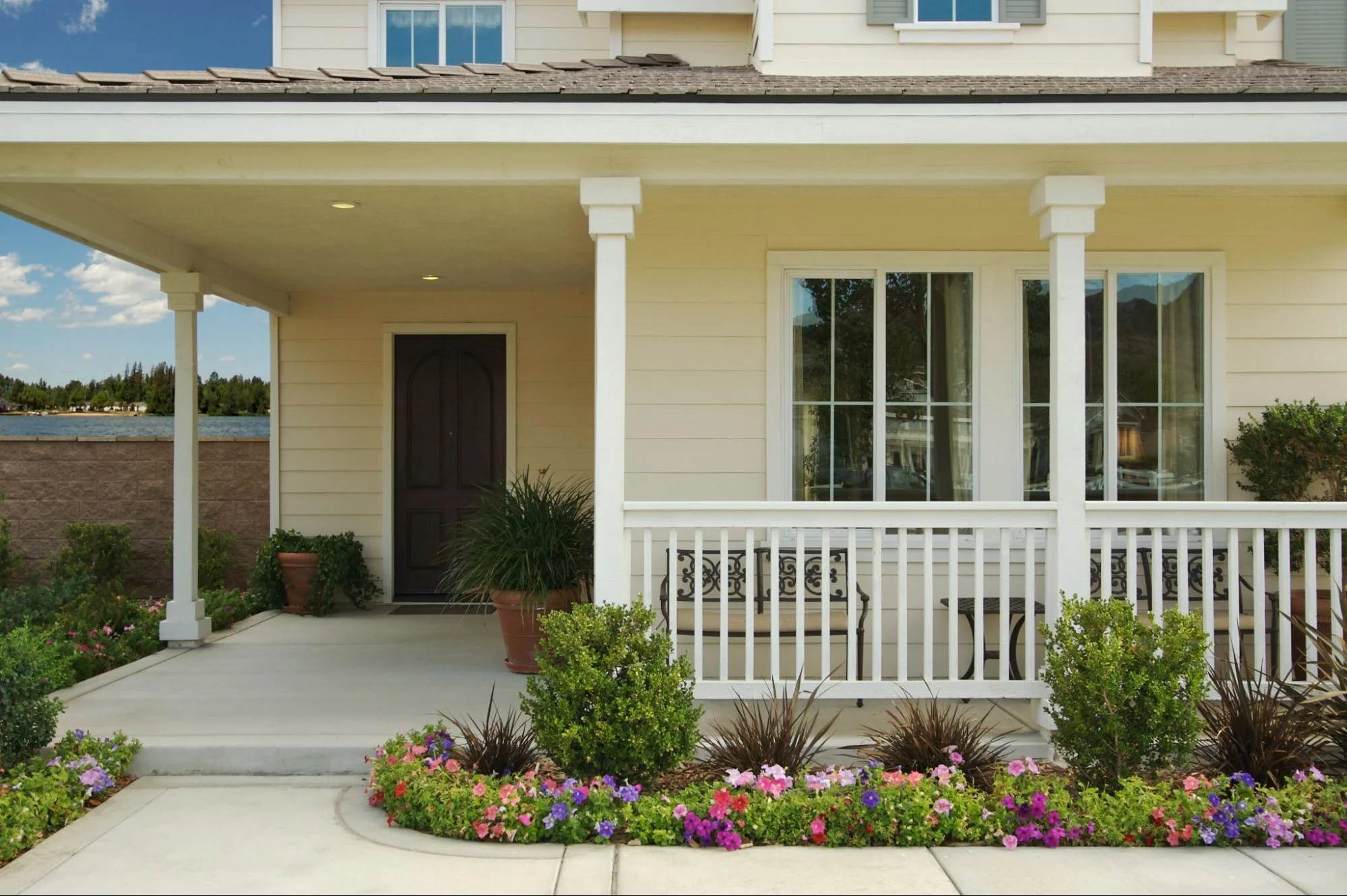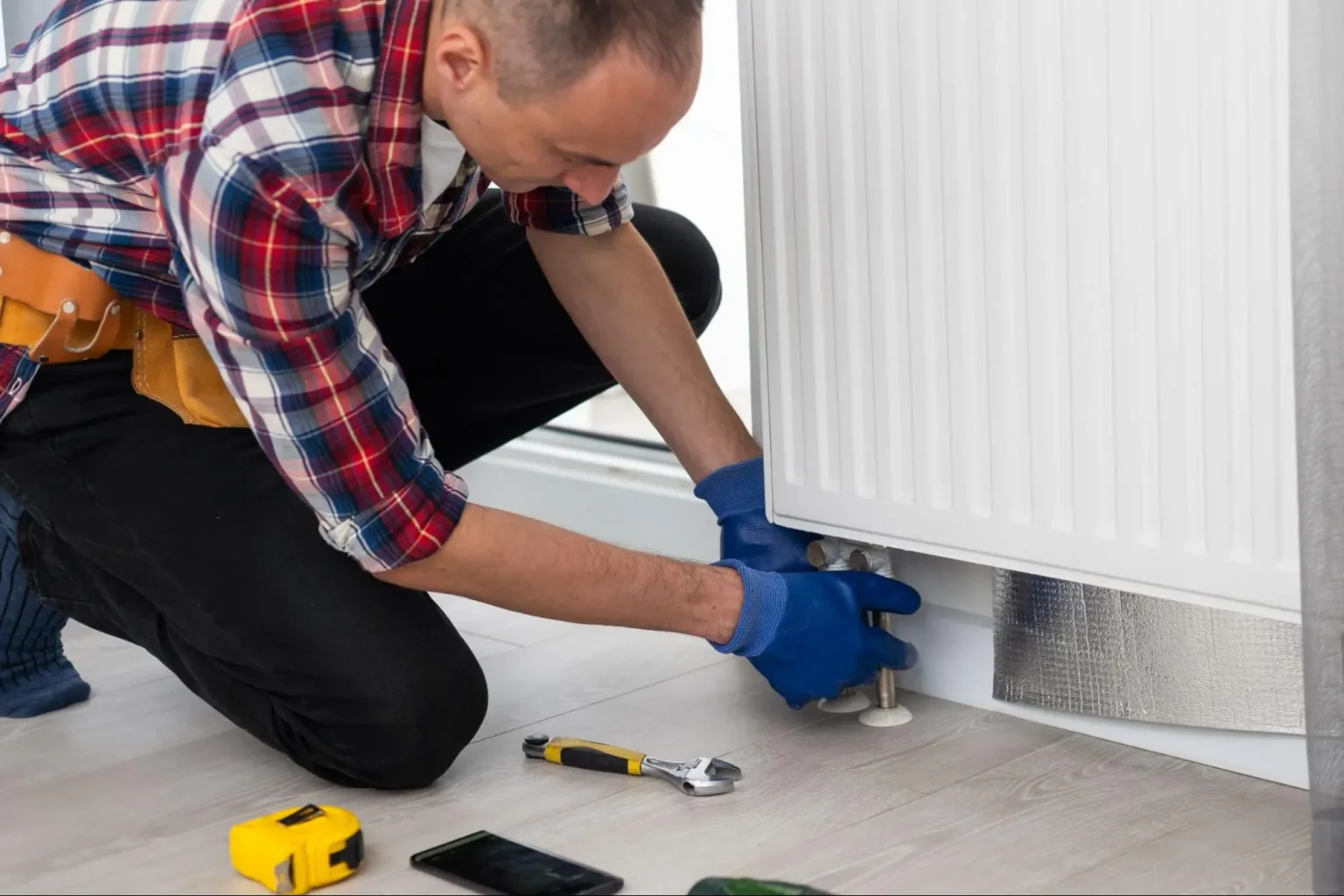
Maintaining your home isn’t just about fixing what’s broken; it’s about preventing future problems. Preventative maintenance is key to extending the life of your house and saving money in the long run. Regular upkeep can help you catch minor problems before they become major headaches, ensuring your home remains a safe and comfortable place to live.
You don’t have to be a professional handyman to handle most of these tasks. Simple checks and fixes, like lubricating door hinges or inspecting weather stripping, can make a big difference. By taking a proactive approach, you can avoid costly repairs and keep your home looking its best.
Whether it’s seasonal tasks like touching up exterior paint or routine checks like replacing HVAC air filters monthly, a little bit of effort goes a long way. A well-maintained home not only adds to your property’s value but can also improve your quality of life.

Regular home maintenance and timely seasonal checks can save you stress and money. By keeping up with simple tasks like cleaning gutters or inspecting HVAC systems, you ensure your home remains efficient and comfortable year-round.
Spring is the perfect time to get your home ready for the warmer months ahead. Start by inspecting your gutters and downspouts to ensure they are clear of debris. Clogged gutters can lead to water damage. Next, clean or replace your air filters to improve indoor air quality and system efficiency.
Check your AC units to ensure they are working correctly before the heat of summer. Don’t forget to inspect exterior walls for any damage, and use a pressure wash to remove any grime that has accumulated over the winter months. Lastly, assess your landscaping needs, trimming any overgrown bushes and trees to keep your home’s exterior looking neat.
Summer maintenance focuses on keeping your home cool and functional. Replace HVAC filters regularly and inspect the AC for any issues. Clean and inspect window screens to ensure they keep bugs out while letting fresh air in. Inspect outdoor lighting for any burned-out bulbs or wiring issues.
Ensure your outdoor spaces are ready for enjoyment by cleaning patios, decks, and any seating areas. Pressure washing these areas can make a significant difference in appearance. Check exterior walls for any signs of deterioration that might have occurred during the spring showers. Investing in shade solutions like awnings can also enhance your outdoor comfort.
As temperatures drop, preparing your home for winter becomes crucial. Start by checking windows and doors for drafts and seal any gaps to improve energy efficiency. Inspect and service your heating system and water heater to ensure they operate smoothly all winter.
Clean your gutters to prevent water damage from fallen leaves. Ensure your roof is in good condition and free from damage. Inspect exterior walls for cracks or damage that could worsen in the winter months. Ensure that all outdoor plumbing is insulated, and any water hoses are disconnected and stored away to prevent freezing.
Winter maintenance is about keeping your home warm and preventing any damage from cold weather. Check your home’s insulation to maintain heat efficiently. Inspect the boiler or heating system for any signs of wear and schedule service as needed.
Reverse your ceiling fans to distribute warm air more effectively. Consider adding weather stripping around doors and windows to prevent drafts. Clear any snow and ice from driveways and walkways to prevent slips and falls. Prepare an emergency kit in case of power outages, including blankets and non-perishable food items.

Regular maintenance can save you from costly repairs and keep your home safe and efficient. This guide covers how to take care of your home systems, structural elements, and important safety upgrades.
Your HVAC system needs regular filter changes to run efficiently. Change the furnace filter monthly to keep air quality high and reduce wear and tear on the system. Check HVAC systems for unusual noises or poor performance, which may signal larger issues.
In the plumbing system, watch for leaky faucets and running toilets. Address minor repairs promptly to avoid water damage and increased water bills. Water filters should be replaced every few months to ensure clean water.
Electrical systems should have regular inspections by qualified handyman services. Check all wiring for wear and tear and replace faulty outlets and switches. Make sure to test and replace batteries in carbon monoxide detectors and smoke alarms regularly.
Inspect your home’s foundation for any cracks or signs of shifting. Minor repairs can prevent extensive damage, which can be very costly. The basement should be kept dry and free of pests. Use a dehumidifier if needed to reduce moisture.
Examine the roof for missing, loose, or damaged shingles. Regular outdoor maintenance can prevent leaks and water damage. Look at the attic for signs of leaks or insulation issues.
The exterior of your house should be maintained too. Touch up siding and trim with paint to prevent rot or insect damage. Clean and repair weatherstripping around doors and windows to improve energy efficiency and prevent drafts.
Improving your home’s safety and efficiency can protect your family and reduce costs. Install energy-efficient windows to save on heating and cooling bills. Seal around doors and window frames to avoid air leaks.
Regularly clean the dryer vent to prevent fire hazards and improve dryer efficiency. Inspect and maintain outdoor faucets to prevent leaks, which can cause damage to your home’s exterior.
Upgrades such as new carbon monoxide detectors and energy-efficient appliances can make your home safer and more efficient. Investing in handyman services for minor repairs can extend the life of your home and protect against future problems.
Make sure to thoroughly check your house for any signs of pests and perform regular maintenance to keep your home in top condition. This includes cleaning gutters, inspecting the roof, and trimming trees and shrubs around the house.
Preventative maintenance is key for keeping your home or apartment in good shape. Regular maintenance helps you avoid costly repairs and ensures everything runs smoothly. Whether you do the tasks yourself or hire professionals, staying on top of maintenance is essential.
Using a checklist can help. These checklists guide you through tasks like inspecting your HVAC system, checking for leaks, and maintaining appliances.
Focus on the basics. Tasks like changing air filters, cleaning gutters, and inspecting the roof should be part of your routine. These small actions can prevent bigger issues down the line.
Don’t forget seasonal tasks. For instance, winter requires preparing your heating system, while summer focuses on cooling. Preventative maintenance also includes exterior upkeep. Regularly checking and repairing your building’s exterior ensures that your property remains safe and attractive.
By staying proactive, you extend the life of your property’s components and systems. This makes your home safer and more efficient and often saves you money in the long run. Keep a regular schedule and use reliable checklists to stay organized and thorough.
Include tasks like checking smoke detectors, inspecting plumbing and electrical systems, and examining exterior features like roofs and gutters. Make sure to test heating and cooling systems and look for any signs of wear and tear that could lead to bigger issues.
Routine maintenance should be done seasonally. For example, check heating systems before winter and cooling systems before summer. Monthly tasks include testing smoke detectors and examining plumbing for leaks.
Consider the age and condition of the property, local climate, and specific tenant needs. Seasonal changes and manufacturer recommendations for equipment maintenance should also guide your schedule.